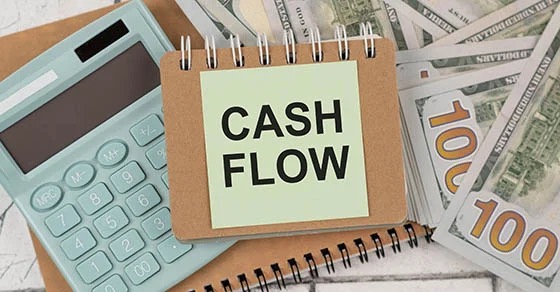Let me start with something important: donating to charity should never be solely about the tax benefits. True charitable giving comes from the heart—a genuine desire to make a positive impact in the world and support causes you care about.
That said, tax law is written in a way that rewards charitable behavior, and there are legitimate strategies we can use to combine our charitable intent while also lowering our tax burden. At the end of the day, if you’re able to keep more money in your pocket through smart tax planning, you can give more and make an even bigger difference in the world.
One of the most powerful tools available for strategic charitable giving is the Donor Advised Fund (DAF). This wonderful vehicle not only makes donating easier but also opens up opportunities to maximize your tax savings while supporting the causes you love.
What Is a Donor Advised Fund?
A Donor Advised Fund is a charitable giving vehicle that allows you to contribute various types of assets—including cash, publicly traded securities, real estate, and even private business interests—into a fund that you can then distribute to charities over time.
Here’s what makes DAFs so powerful: you get the tax deduction in the year you contribute, but you can make the actual charitable grants over the course of many years. This timing flexibility is what unlocks several strategic opportunities.
When Might a DAF Come in Handy?
DAFs are particularly valuable in years when you:
- Have higher income than usual
- Have extra discretionary funds available to donate
- Are looking for additional tax deductions to offset income
- Want to contribute to charity but prefer to distribute the funds strategically over time
Key Strategies for Maximizing DAF Benefits
1. Bunching Donations to Itemize Deductions
One of the most effective strategies is “bunching” multiple years’ worth of charitable contributions into a single tax year.
Here’s why this works:
Let’s say you’re in the 35% tax bracket and typically donate $4,000 annually. Your other itemized deductions include:
- SALT (state and local taxes): $10,000
- Mortgage interest: $15,000
- Annual charity: $4,000
- Total itemized deductions: $29,000
Since the standard deduction is $31,500 for married couples filing jointly in 2025, you’d take the standard deduction and receive no tax benefit from your charitable giving.
But with bunching:
Instead of donating $4,000 each year, you contribute $20,000 (five years’ worth) to a DAF in one year:
- SALT: $10,000
- Mortgage interest: $15,000
- Charitable contribution: $20,000
- Total itemized deductions: $45,000
Now you can itemize and receive a tax benefit of 35% on the additional $13,500 in deductions above the standard deduction—saving you $5,250 in taxes. You can then distribute the $20,000 from your DAF to charities over the next five years as planned.
2. Donating Appreciated Assets
Another powerful strategy involves donating appreciated securities instead of cash.
Here’s how it works:
If you have stock that’s gained significant value but you’re hesitant to sell due to capital gains taxes, you can donate the shares directly to your DAF. This allows you to:
- Receive a tax deduction for the full fair market value of the stock
- Avoid paying capital gains tax on the appreciation
- Free up cash that you would have otherwise donated
Example: You own stock worth $10,000 that you purchased for $3,000. If you sold the stock, you’d pay capital gains tax on the $7,000 gain. Instead, by donating the stock to your DAF, you get a $10,000 charitable deduction and avoid the capital gains tax entirely.
Keep in mind: For appreciated assets held longer than one year, your deduction is limited to 30% of your Adjusted Gross Income (AGI), compared to 60% of AGI for cash donations.
3. Year-End Tax Planning Flexibility
DAFs provide excellent flexibility for year-end tax planning. If you find yourself with unexpected income or bonuses late in the year, you can quickly contribute to your DAF to offset the additional tax burden, then take time to thoughtfully distribute the funds to charities throughout the following year.
Potential Downsides to Consider
While DAFs offer significant advantages, there are some limitations to be aware of:
Loss of Control: Once you contribute assets to a DAF, you technically lose legal control over them. While you can make recommendations for grants, the DAF sponsor has the final say (though recommendations are almost always honored).
Charity Limitations: Grants from DAFs can only go to qualified 501(c)(3) organizations as recognized by the IRS. You cannot use DAF funds for private scholarships, political contributions, or to fulfill existing pledges.
Sponsor Guidelines: Each DAF sponsor may have specific rules about minimum contributions, grant amounts, and administrative fees. Be sure to review these guidelines before opening an account.
Investment Risk: If you choose to invest the funds in your DAF while waiting to distribute them, there’s always the risk that the account value could decrease, leaving less money available for charitable giving.
Summary
Donor Advised Funds represent one of the most flexible and tax-efficient ways to manage your charitable giving. By allowing you to separate the timing of your tax deduction from your actual charitable distributions, DAFs enable strategic planning that can significantly enhance both your tax savings and your charitable impact.
The key strategies—bunching donations to maximize itemized deductions and donating appreciated assets to avoid capital gains—can result in substantial tax savings that allow you to give even more to the causes you care about.
Remember, the goal isn’t just to minimize taxes; it’s to maximize your ability to make a positive difference in the world. When used thoughtfully, DAFs can help you achieve both objectives simultaneously.
If you’re considering implementing any of these strategies, be sure to work with your financial advisor and tax professional to ensure they align with your overall financial plan and charitable goals. The intersection of tax planning and charitable giving requires careful coordination to maximize benefits while staying compliant with all applicable regulations.
Any discussion of taxes is for general information purposes only, does not purport to be complete or cover every situation, and should not be construed as legal, tax or accounting advice. Clients should confer with their qualified legal, tax and accounting advisors as appropriate.
CRN202807-9034442


